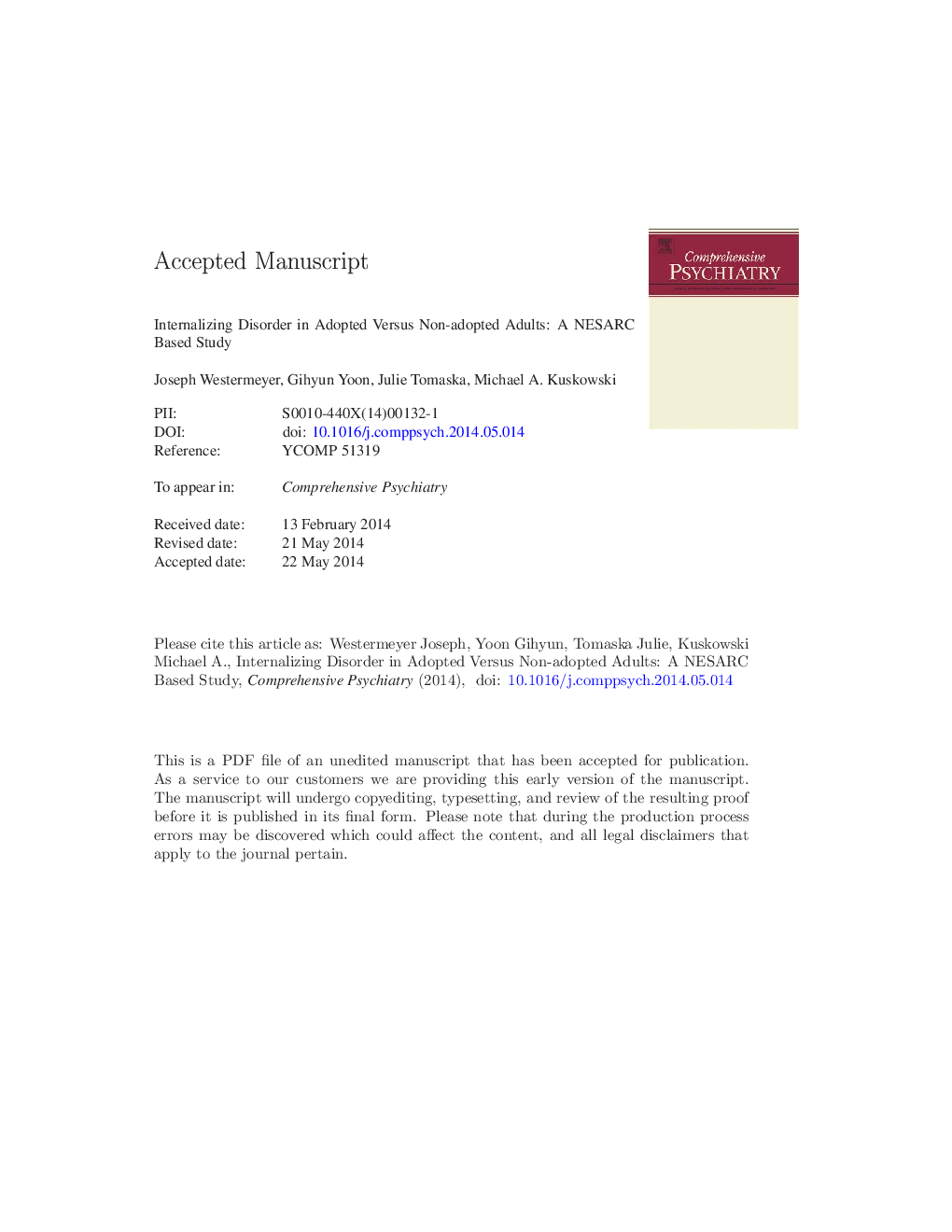| Article ID | Journal | Published Year | Pages | File Type |
|---|---|---|---|---|
| 10297539 | Comprehensive Psychiatry | 2014 | 22 Pages |
Abstract
The objective of the study consisted of comparing lifetime prevalence rates and odds ratios of anxiety, mood, and psychotic disorders in adopted-versus-non-adopted people in a nationally representative sample. The data were drawn from the National Epidemiological Survey on Alcohol and Related Conditions (NESARC). The main outcome measure was the prevalence of lifetime internalizing psychiatric disorders in adopted (n = 378) versus non-adopted (n = 42,503) individuals. Adoptees and non-adoptees were compared to estimate the odds of lifetime internalizing disorders using logistic regression analyses. Adoptees had higher prevalence rates of several lifetime mood and anxiety disorders compared with non-adoptees, with a 1.61-fold increase (95% CI 1.29-2.02) in the odds of any mood disorder and a 1.49-fold increase (95% CI 1.18-1.89) in the odds of any anxiety disorder compared with non-adoptees. Regarding specific mood and anxiety disorders, adoptees had increased odds of major depressive disorder, bipolar I disorder, panic disorder without agoraphobia, specific phobia, and generalized anxiety disorder. Disorders not differing between adoptees and non-adoptees included dysthymia, bipolar II disorder, panic disorder with agoraphobia, social phobia, and psychotic disorder. One adoption-specific risk factor was associated with lifetime mood disorder (i.e., Asian/Pacific Island). In conclusion, adoptees in a large sample from the general population had higher rates of mood and anxiety disorders compared to non-adoptees.
Related Topics
Life Sciences
Neuroscience
Biological Psychiatry
Authors
Joseph Westermeyer, Gihyun Yoon, Julie Tomaska, Michael A. Kuskowski,
